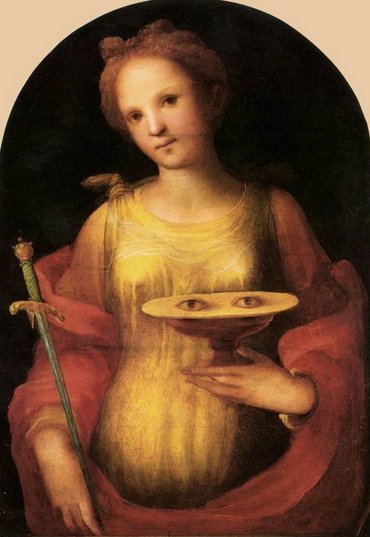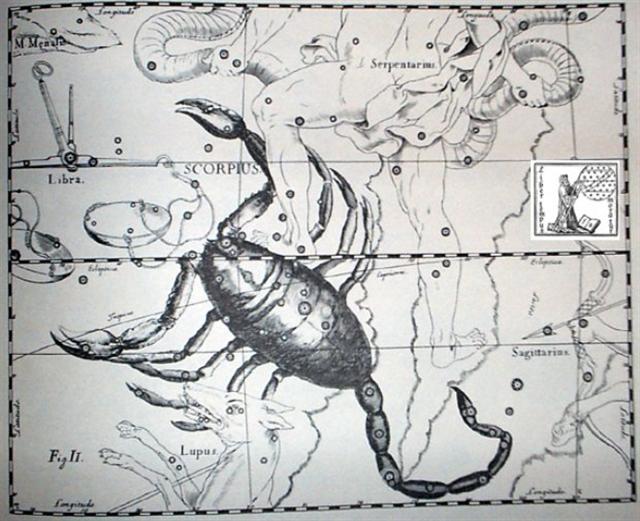There are 172 days
(equal to the
distance to June 21
from the beginning
of the Gregorian
year) from hakaariki
iti
in Ca4-7 to
hakaariki nui in
Ca9-27:
|
Pleione
13 (27) |
171 |
Az
Zubana 3
(199) |
|
June 12
(528) |
December
1 (700) |
 |
 |
|
Ca4-7
(83) |
Ca9-27
(255) |
|
e
gagata
hakaariki |
etoru
gagata
hakaariki
kia raua |
|
φ¹
Orionis
(83.1),
Heka
(83.2) |
Denebakrab
(254.7),
ι
Ophiuchi
(255.3),
Grafias
(255.4) |
|
December
12 (346) |
June 2
(153) |
|
Akleel 1
(210) |
Pleione
3 (17) |
|
Kuma
(265.6),
Ras
Alhague
(266.1),
Sargas
(266.3),
μ
Ophiuchi
(266.5) |
no star
listed |
The
distance from
December 1 (335)
to June 12 (163)
is 365 + 163 -
335 = 193 days.
To the end of
the year there
are 30 days. And
700 + 30 = 730 =
2 * 365.
The
haka-ariki
type of glyph
could mean
'a dark night'
when a new king
will be
'alighted'.
December 1 is
255 days after
the March
equinox. This
number could
signify a night
similar to
Gregorian day
355 (December
21). 80 + 255 =
335 and 335 + 20
= 355.
Number plays
could
include e.g. 4
weeks (4-7
alluding to 4 *
7) and 700 - 92
weeks = 56 = 8
weeks.
Line Ca10
is beginning
with December 2
(16 * 16 = 256
days after March
21) where the manzil calendar
had reached day
200:
|
Az
Zubana.
4
(200) |
5 |
6 |
|
December
2
(336) |
3 |
4 |
 |
 |
 |
|
Ca10-1
(256) |
Ca10-2 |
Ca10-3 |
|
Erua
inoino |
kua
hua
te
vai |
|
κ
Ophiuchi
(256.2) |
Cujam
(256.9) |
no
star
listed |
|
June
3 |
4 |
5
(156) |
|
Pleione
4 |
5 |
6
(20) |
|
Hassaleh
(73.6) |
Almaaz
(74.7),
Haedus
I
(74.8) |
5h
(76.1) |
|
Haedus
II
(75.9),
ε
Leporis
(76.0),
Cursa
(76.4) |
According to
Metoro there
is sweet
water (te
vai) at
left in
Ca10-3
(where
possibly
kua hua te
vai
could mean
'the
offspring of
rain').
But
200 days
earlier, in
Ca3-7, a
similar sign
at right was
wind (te
matagi):
| Alrescha 15 (365) |
|
Sheratan 1 |
2 |
3 |
| May 16 (136) |
17 |
18 |
19 |
 |
 |
 |
 |
| Ca3-5 (56) |
Ca3-6 |
Ca3-7 |
Ca3-8 |
| ihe tapamea |
e tagata mau toki ki te henua |
e hokohuki mau ki te matagi |
kiore i te henua |
| Maia, Asterope, Merope (55.6), Alcyone (56.1), Pleione, Atlas (56.3) |
no star listed |
Menkhib (57.6) |
Zaurak (58.9), λ Tauri (59.3) |
| November 15 |
16 (320) |
17 |
18 |
| Simak 13 (183) |
Syrma 1 |
2 |
3 |
| χ Lupi, (239.6), ω Serpentis (239.7), Ba, χ Herculis (239.8). κ Cor. Borealis, ρ Serpentis (239.9) |
ρ Scorpii (240.8), ξ Lupi, λ Cor. Borealis (241.1), Zheng (241.2), Vrischika (241.3), ε Cor. Borealis (241.5) |
Dschubba (241.7), η Lupi (241.9), υ Herculis (242.3), ρ Cor. Borealis (242.4), ι Cor. Borealis (242.5) |
ξ Scorpii (242.7), Acrab, Jabhat al Akrab (243.3), θ Lupi, Rutilicus (243.5), |
Wind is the
opposite of
rain - it
dries the
earth
instead of
wetting it.
Therefore
wind
ought to
characterize the 'year
in straw' in
contrast to
the 'year in
leaf'.
| winter |
year in straw |
dry |
 |
| summer |
year in leaf |
humid |
 |
A dot in
front of
rakau
(tree) in
Ca10-6
may have
indicated
a cardinal
point at the
beginning of
the 'year in
leaf' and
this was day 261
counted from
March 21:
|
Az
Zubana
7 |
8
(204) |
|
9 |
10 |
|
December
5 |
6 |
7 |
8
(342) |
 |
 |
 |
 |
|
Ca10-4 |
Ca10-5
(260) |
Ca10-6 |
Ca10-7 |
|
te
kiore
- te
inoino |
kua
oho
te
rima
kua
kai
-
ihe
nuku
hoi |
Tupu
te
toromiro |
kua
noho
te
vai |
|
no
star
listed |
Sabik
(259.7),
η
Scorpii
(259.9),
Nodus
I
(260.0) |
π
Herculis
(260.7),
Ras
Algethi
(260.8),
Sarin
(261.0),
ο
Ophiuchi
(261.4) |
ξ
Ophiuchi
(262.2),
θ
Ophiuchi,
ν
Serpentis
(262.4) |
|
June
6
(157) |
7 |
June
8 |
9
(160) |
|
Pleione
7 |
8
(22) |
Pleione
9 |
10 |
|
λ
Eridani
(76.7) |
μ
Leporis
(77.6),
ĸ
Leporis
(78.0),
Rigel
(78.1),
Capella
(78.4) |
no
star
listed |
λ
Leporis
(79.6) |

| June 6 |
|
7 |
181 |
December 6 |
|
7 |
 |
 |
 |
 |
| Ca4-1 (77) |
Ca4-2 |
Ca10-5 (260) |
Ca10-6 |
| λ Eridani (76.7) |
Rigel (78.1), Capella (78.4) |
μ Leporis (77.6), ĸ Leporis (78.0), Rigel (78.1), Capella (78.4) |
no star listed |
| kua tupu te rakau |
kua tupu - te kihikihi |
kua oho te rima kua kai - ihe nuku hoi |
Tupu te toromiro |
The
following 5
glyphs
could
possibly
be
interpreted
as 5
dark days.
265 days
after March
21 in a way
resembles
day 365
(December
31):
|
Az
Zubana
11 |
12
(208) |
13 |
Akleel
1 |
2 |
|
December
9 |
10 |
11 |
12
(346) |
St
Lucia |
 |
 |
 |
 |
 |
|
Ca10-8 |
Ca10-9 |
Ca10-10
(265) |
Ca10-11 |
Ca10-12 |
|
te
moko |
te
marama |
te
kava |
manu
rere |
te
mauga
tuu
toga |
|
ρ
Herculis
(262.9) |
σ
Ophiuchi
(263.6) |
Lesath
(264.7),
Alwaid,
Maasym
(265.1),
Shaula
(265.3) |
Kuma
(265.6),
Ras
Alhague
(266.1),
Sargas
(266.3),
μ
Ophiuchi
(266.5) |
Nan
Hae
(266.6),
ι
Herculis
(266.7) |
|
June
10 |
11 |
12 |
13 |
14
(165) |
|
Pleione
11 |
12 |
13 |
Albatain
1 |
2
(29) |
|
Bellatrix,
Saif
al
Jabbar
(80.7),
Elnath
(80.9)
|
Nihal
(81.7),
Mintaka
(82.4) |
ε
Columbae
(82.6),
Arneb
(83.0),
Heka
(83.2),
Hatysa
(83.5) |
Alnilam
(83.7),
Heavenly
Gate
(84.0) |
Alnitak,
Phakt
(Phaet),
(84.7) |
The drink of
kava
was probably
connected
with transfer of
power to the
new ruler:
St Lucia
certainly represents
Venus and
therefore the
following
8 glyphs
could
represent
the 8 dark
nights
before her
return as
Morning
Star:
|
Akleel
3
(212) |
4 |
|
December
14
(348) |
15 |
 |
 |
|
Ca10-13
(268) |
Ca10-14 |
|
kua
tupu
te
mea
- i
te
inoino |
ka
tupu
te
toromiro
- i
te
inoino |
|
Girtab,
ο
Serpentis
(267.6),
Kelb
Alrai
(268.1) |
Kew
Ho
(268.6),
η
Pavonis
(268.7),
Apollyon
(268.9),
Muliphen
(269.0),
Basanismus
(269.5) |
|
June
15
(166) |
16 |
|
Albatain
3
(30) |
4 |
|
γ
Leporis
(85.9),
Saiph
(86.5) |
ζ
Leporis
(86.6) |
|
Akleel 5 |
6 |
7 (216) |
8 |
9 |
|
December 16 |
17 |
18 |
19 |
20 (354) |
 |
 |
 |
 |
 |
|
Ca10-15 |
Ca10-16 |
Ca10-17 (272) |
Ca10-18 |
Ca10-19 |
| rima heu ki te vai |
te moko oho mai |
te marama |
te kava |
manu rere |
|
Pherkard (269.9) |
Rukbalgethi Genubi
(271.1), ξ Herculis (271.5) |
Etamin, ν Herculis
(271.7), ν Ophiuchi (271.8), ζ Serpentis (272.4) |
τ Ophiuchi (272.9) |
Nash (273.7), Zhōngshān
(274.0) |
|
June 17 |
18 |
19 |
20 |
21 (172) |
|
Albatain 5 |
6 |
7 |
8 |
9 (36) |
| Wezn
(87.6), δ Leporis (87.7), Betelgeuze (88.3) |
η
Leporis (89.0), Praja-pāti, Menkalinan, Mahashim, and γ Columbae
(89.3) |
η
Columbae (89.7), μ Orionis (90.3), χ² Orionis (90.5) |
ν
Orionis (91.4) |
no
star listed |
|
Akleel 10 (584) |
11
(220) |
|
December 21 (355) |
22 |
 |
 |
|
Ca10-20 (275) |
Ca10-21 |
| te
inoino erua |
|
π Pavonis (274.6), ι
Pavonis (275.1) |
Polis (275.9) |
|
June 22 (173) |
23 |
|
Albatain 10 |
11
(38) |
| ξ
Orionis (92.5), Tejat Prior (93.4) |
κ
Aurigae (93.6) |

Christmas
Day
corresponds
to the
beginning of
the manzil
Qalb al
Akraab -
Heart of the
'Crab'
(meaning
Scropio) -
and December
1 had
Deneb-Akraab
(Tail of the
'Crab')
rising
together
with Sun 255
days after
March 21.
|
Akleel 12 |
13 (222) |
Qalb al Akraab 1 |
2 |
3 |
4 |
|
December 23 |
X-mas Eve |
X-mas Day |
26 (360) |
27 |
28 |
 |
 |
 |
 |
 |
 |
|
Ca10-22 (277) |
Ca10-23 |
Ca10-24 |
Ca10-25 |
Ca10-26 |
Ca10-27 |
| tupu te raau i vai
oka hia |
te moko |
te marama |
te kava |
manu kara etahi |
te
mauga pu hia |
|
η Sagittarii (276.9),
Kaus Medius, κ Lyrae (277.5) |
Tung Hae (277.7), Kaus
Australis (278.3), ξ Pavonis (278.4) |
Al Athfar (278.6), Kaus
Borealis (279.3) |
ν Pavonis (280.4) |
κ Cor. Austr. (280.9), θ
Cor. Austr. (281.0) |
Vega (281.8) |
|
June 24 |
25 |
26 |
27 |
28 |
29 (180) |
|
Albatain 12 |
13 (40) |
Al Tuwaibe' 1 |
2 |
3 |
4 |
| Furud
(94.9), Tejat Posterior, Mirzam (95.4) |
Canopus (95.6), ψ1 Aurigae (95.9) |
no stars listed |
ν Puppis (99.2),
ψ3 Aurigae (99.4), ψ2 Aurigae (99.5) |
ψ4 Aurigae
(100.5) |
The
brilliant
star Vega in
Lyra was
rising
together
with Sun in
day 180 +
182 = 362.
The bird
with
only 1
wing (manu
kara
etahi)
could
refer to
Sun, who
in
contrast
to Moon
and
Venus
has a
steadily
shining single
'face'.
In
Ca10-26
his beak
is still
closed
for
the
opening
(vaha)
of the
new year has
yet to
come.
Maybe the 8
dark
nights
of Venus
(with 2
'wings')
-
Cb10-26
- are
illustrated
with a
pair
of
female birds
looking
up with
empty
eye-holes,
and thus
searching
in
vain:
 |
 |
 |
4 |
 |
 |
 |
|
Ca10-11 |
Ca10-12 |
Ca10-13
(268) |
Ca10-18 |
Ca10-19 |
Ca10-20 (275) |
|






















